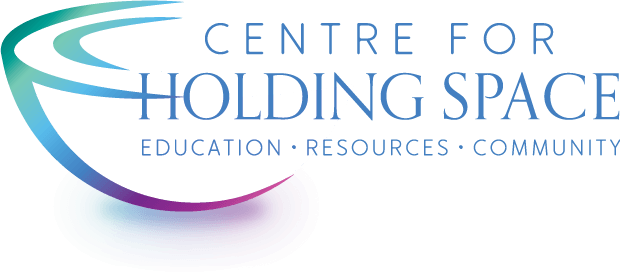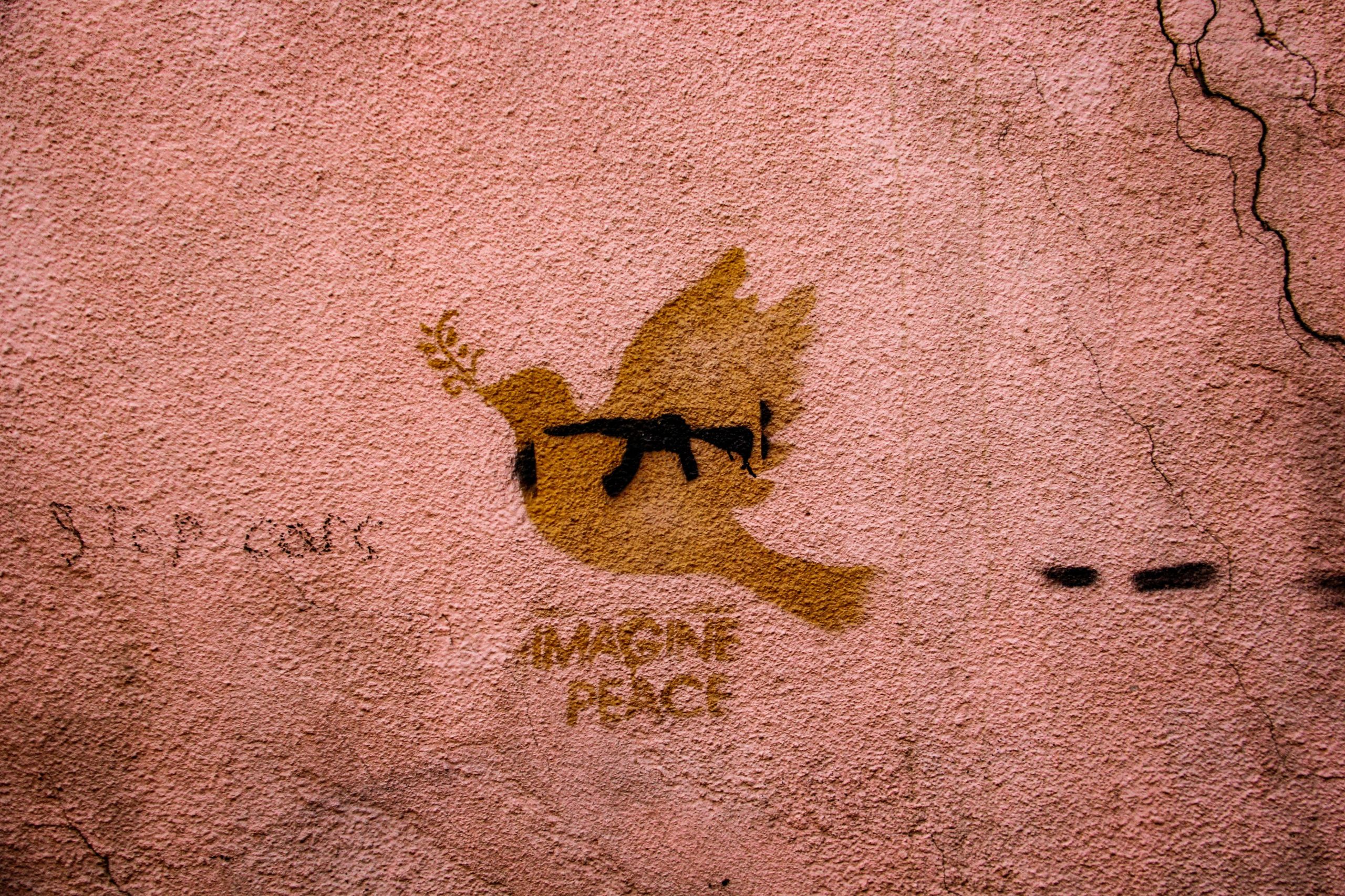by Emily Gillies
When I think of peace, I think how over the years I have noticed a trend in the “meditation” and “self-help” realms where the images and the descriptions we are invited to associate with peace are focused on perfectly tranquil images, likely including a beautiful woman, probably wearing immaculate white clothes, with perfect hair and makeup of course, sitting in a relaxed posture in a gorgeous setting such as a pristine white sand beach at sunset, or maybe on a dock suspended over perfectly smooth and clear water; her hands raised in a meditative position and a serene expression on her young, flawless face.
While I might buy into this image as an end result of peace, or as ONE path to peace, there is so much more to truly LIVING a LIFE of peace. What gets us to the peace that is described in this image might actually be some really hard moments, some tearful conversations, very long stoic efforts of changing habits, courageous moments that might look very messy or catastrophic, and maybe some very painful and ugly times of sobbing, raging, working in the muck of life. None of that stuff ever makes it onto the glamorous shots of meditating towards peace! The images on the beach in the perfect clothes would rather have us bypass all the messy parts of crying, the uncomfortableness of speaking your truth to someone while your pulse races, the remorse or shame of acknowledging a hurtful behaviour or unhealthy action, the fear and fortitude to be disciplined with your finances – this list of hurdles to jump on the way to living with real peace could go on and on – and very few glossy photos are ever captured of them,– and they are usually a heck of a
lot more effective than jetting off to a tranquil beach.
The peacefully meditating images also do not address systemic and cultural inequities such as race and gender divides, disparities between the rich and the poor, the inaccessibility that folks with handicaps might experience and many other factors of marginalization – these are also all barriers to peace, and ones that no “one person” is responsible for. How do we bring peace to these areas?
The beautiful sunset images do us a disservice with offering us only ONE simple, pretty, enticing image of peace. Because then when we look around the world – or our family – or our workplace – or our community — and we see the violence, despair, and inequalities – there becomes such a disconnect between the two polarities we don’t know what to do. So we talk about peace on Remembrance Day (here in Canada) and recommit our wishes for a peaceful world… and then… what?
What will actually move us to peace?
“Actually”… that is the key word: actually, because it involves the word act… action. Peace has to be an action.
Actions of violence we can easily imagine: there is a direct conflict, there is a “non-peaceful” event a person can point to. Our law books have extensive paragraphs defining different violent acts, we see them on the news and hear about it in our communities nearly every day, and perhaps experience or perpetrate it.
Let’s set aside the concept of direct conflict for a moment, and inquire into “indirect conflict” which can look like peace, but it’s not really. The way the lady on the beach can look like the vision of ‘self-help’ or ‘personal transformation’ but probably isn’t, there are times when on the surface it might look like peace but there are elements contributing to an ‘indirect conflict’.
Norwegian sociologist Johan Galtung defined a term for this called “negative peace” – which is merely the absence of violence. This a term that describes when there is no war but there definitely isn’t peace either. There can be many layers of underlying tension waiting to erupt into direct conflict once again, for example, North & South Korea aren’t actively engaged in war at the moment, but no one would say that those two nations have a ‘peaceful rapport’; they merely have the absence of direct violence right now. Same with the Israeli – Palestine conflict; ongoing tensions which just in recent history has included different levels of “negative peace” for three quarters of a century, and has not come to resolution.
So if violence is an action, and inaction creates something that is more like ‘negative peace’ – and the lady on the beach is just a showy, pretty picture – then how DO we find peace?
Turning to the words of Martin Luther King, Jr: “True peace is not merely the absence of tension; it is the presence of justice.”
Justice, Dr. King says, is the destination aligned most closely to the realm of peace. And the path to justice can be an arduously long one, or just plain elusive, so it may seem. But at least we have an idea of where we should head; that is helpful. And to me, justice seems like the end result of working through a conflict, which takes into account the interests of all related parties and societal aspects. I would very much agree with Dr. King.
Historically, on the world stage, and likely in close interpersonal relationships, we have very few examples of how to hold, embrace, and helpfully deal with tension & conflict — to be with the tension – in a generative, life-giving, non-destructive way. Even in parenting realms, what looks like positive and peaceful parenting options of structure, discipline, routine, time-outs, expectations, and explanations – all these can easily create the conditions for negative peace instead of true peace. On the surface it might look like peace, but from the child’s perspective is it really peace they are experiencing in their family dynamics? Or perhaps are they enduring a lot of negative peace?
We are familiar with the term “conflict avoidance”, and on the other end of the spectrum we have words like conflict “resolution”, “mitigation”, “management”, that suggest we want the conflict to go away, to be resolved, with focus on how to end the conflict process. Avoiding it or mitigating it: neither of these approaches has much room for the conflict to emerge and to exist.
I postulate that lack of conflict is NOT the goal – there will always be conflict. It is unreasonable to expect life to be the tranquil meditation picture: storms – literal and figurative – will always come and go. We are complex people with complex lives and relationships; it is reasonable to think that conflict will arrive with regularity.
I’ve come to think of conflict arising as a helpful red flag saying “Oh hello! There’s a bit of a problem here – this – right here – is where you should put some energy and time and attention! It might just get worse if you ignore me! Come look at what I have to show you!”
Can we embrace that red flag with curiosity, optimism for good outcomes for all invested parties, the creativity to re-imagine new possibilities, readiness and ability to sit with the tension, acknowledgement for the discomfort, and honesty to explore where the true problems lie, as we look towards something that might look like justice?
If so, we move from ‘conflict resolution’ to conflict transformation.
It involves a lot. We have to stay with the process. Like an egg in a frying pan going from liquid to solid, there is a transformation taking place. It requires a space (frying pan) and time and heat. When we crack that egg and it is just raw, clear, and unappetizing, we trust there is a process whereby eventually that egg will be something nourishing and desirable. In situations of conflict, can we show up the same?
Do we ever practice that?
Do we have the patience to wait for transformation to occur?
Do we have tools, like the frying pan and a spatula, to helpfully manoeuvre within the situation?
Do we have anything like heat to help the process occur?
What would that heat be like?
I personally think that the heat comes from inside of us such as this great molten core; if you will, picture it as the earth we’ve been told has molten lava in the inside; what if our spirit is like that too? What if the core of our being, where Mystery resides in us and the sacred part of our uniqueness and specialness lives – is like a churning chamber of heat and potential force? What if that is the place we access when we need the heat – the energy – the method – to transform a conflict?
Albert Camus, mid-20th Century French philosopher and Author helps us access this place of personally resourced heat in this quote: “In the midst of hate, I found there was, within me, an invincible love. In the midst of tears, I found there was, within me, an invincible smile. In the midst of chaos, I found there was within me an invincible calm. I realized, through it all, that in the midst of winter I found there was, within me, an invincible summer. And that makes me happy. For it says that no matter how hard the world pushes against me, within me, there’s something stronger – something better, pushing right back.”
This is a direction we can turn to, to become internally resourced, when we meet conflict.
I do not believe we are here in this earthly existence, with these magnificently complex bodies and minds, merely to aspire to experiences of sitting around on a beautiful beach with nothing but tranquility in the heart and restfulness in the limbs. It’s nice, at times, sure, but No! We are meant for, and capable of, so much more!
From Joan of Arc, Mother Theresa, Mahatma Gandhi, Jesus of Nazareth, to Nelson Mandela, Malala Yousafzai and Dr. Martin Luther King Jr. who was mentioned above, did not use their lives to settle for the “negative peace” in which they found themselves. This cast, and many others, through a myriad of historical, religious, and cultural lenses engaged the things that were problematic to the cultivation of true peace – they challenged law, finance and government officials, went against societal norms that cast out certain members, celebrated the presence and worked to enhance the rights of children, and many displayed a strong devotion to their faith with real language about the REAL trials being experienced in life, they endured traitorous people and systems, public persecution, and some came to their death, directly by being involved in the muck of Real Peace. The irony of the list of people whom history associates with peace but who led lives significantly devoid of peace is not lost on me.
Ergo, the absence of conflict is not to experience real peace. The image of the perfect lady on the beach is also not the work of real peace. To achieve that we are going to have to get our pristine white clothes a little dirty, probably mess up our hair, and perhaps get a little red faced from crying or being angry or stressed out. It’s going to be uncomfortable. We don’t get to do it at sunset beside a pretty beach.
You’ve heard the saying, we “have to WORK for peace.”
So let’s work. Let’s DO. Let’s MOVE. Let’s think and ACT.
Peace is an ACTION. Let us be brave and bold and do the hard work.

